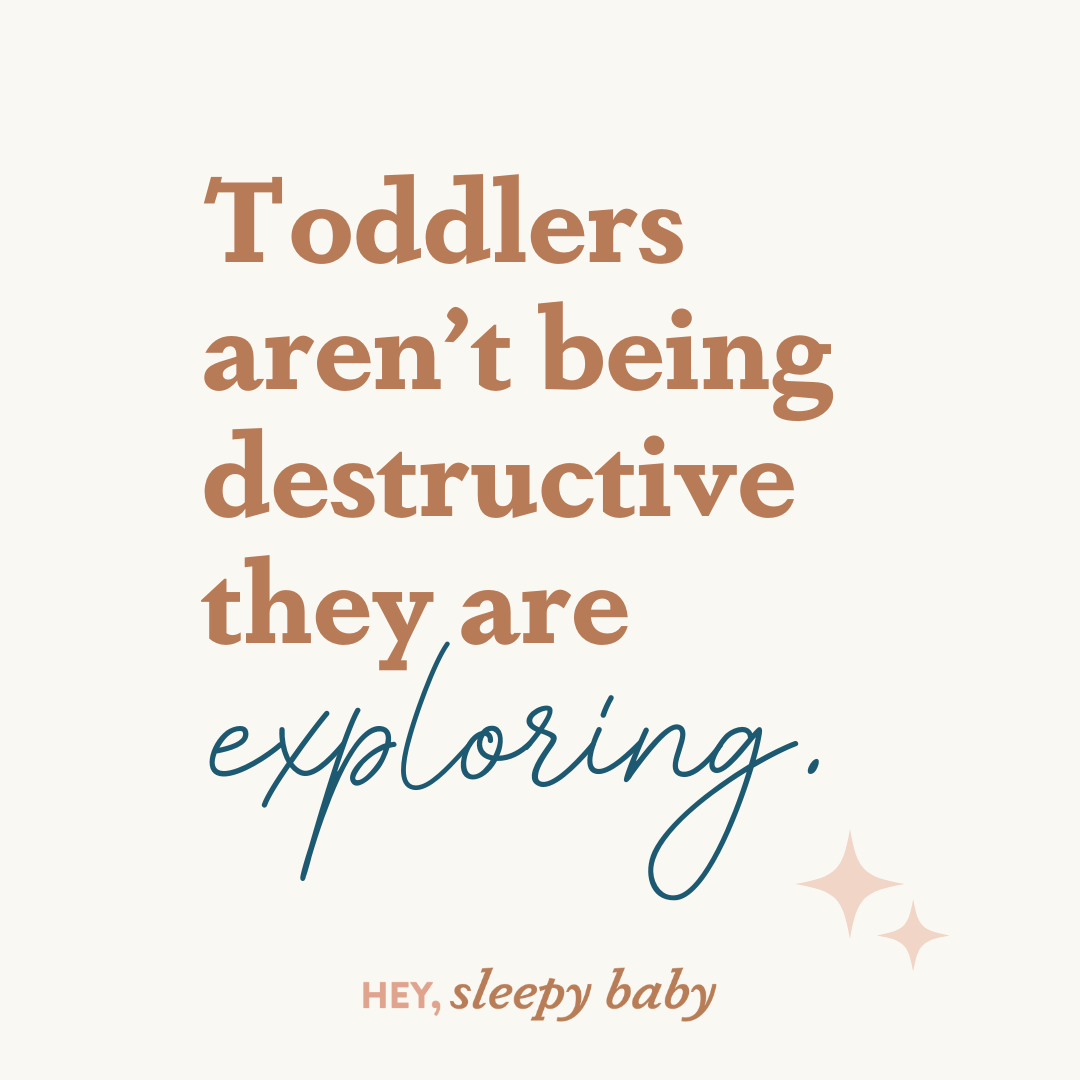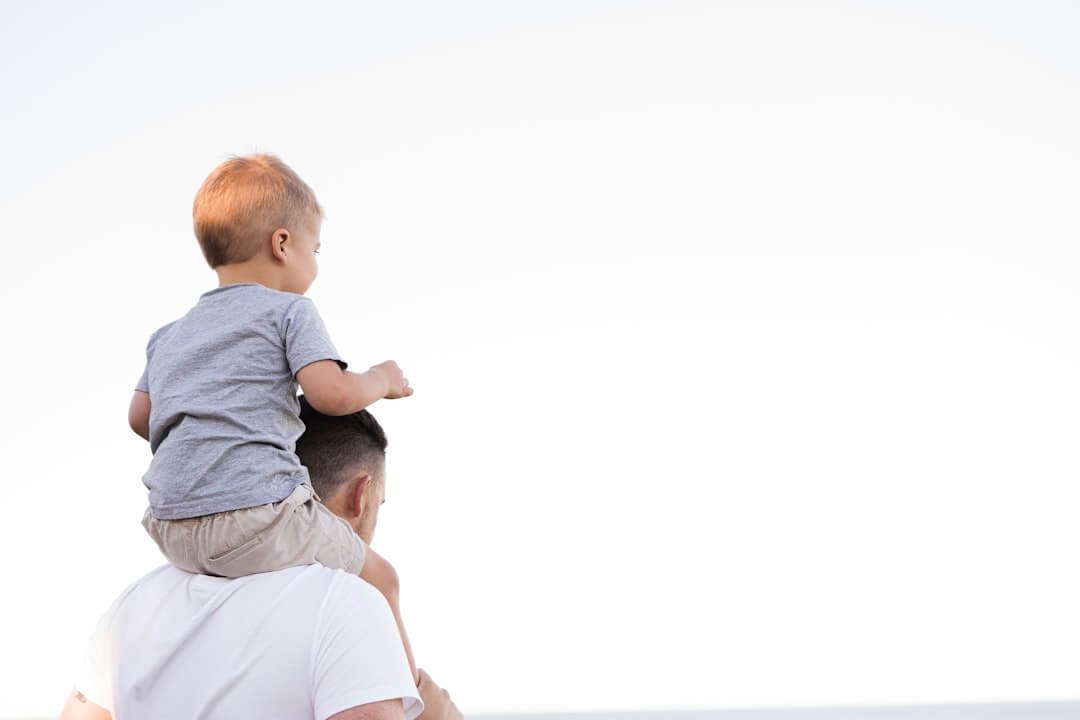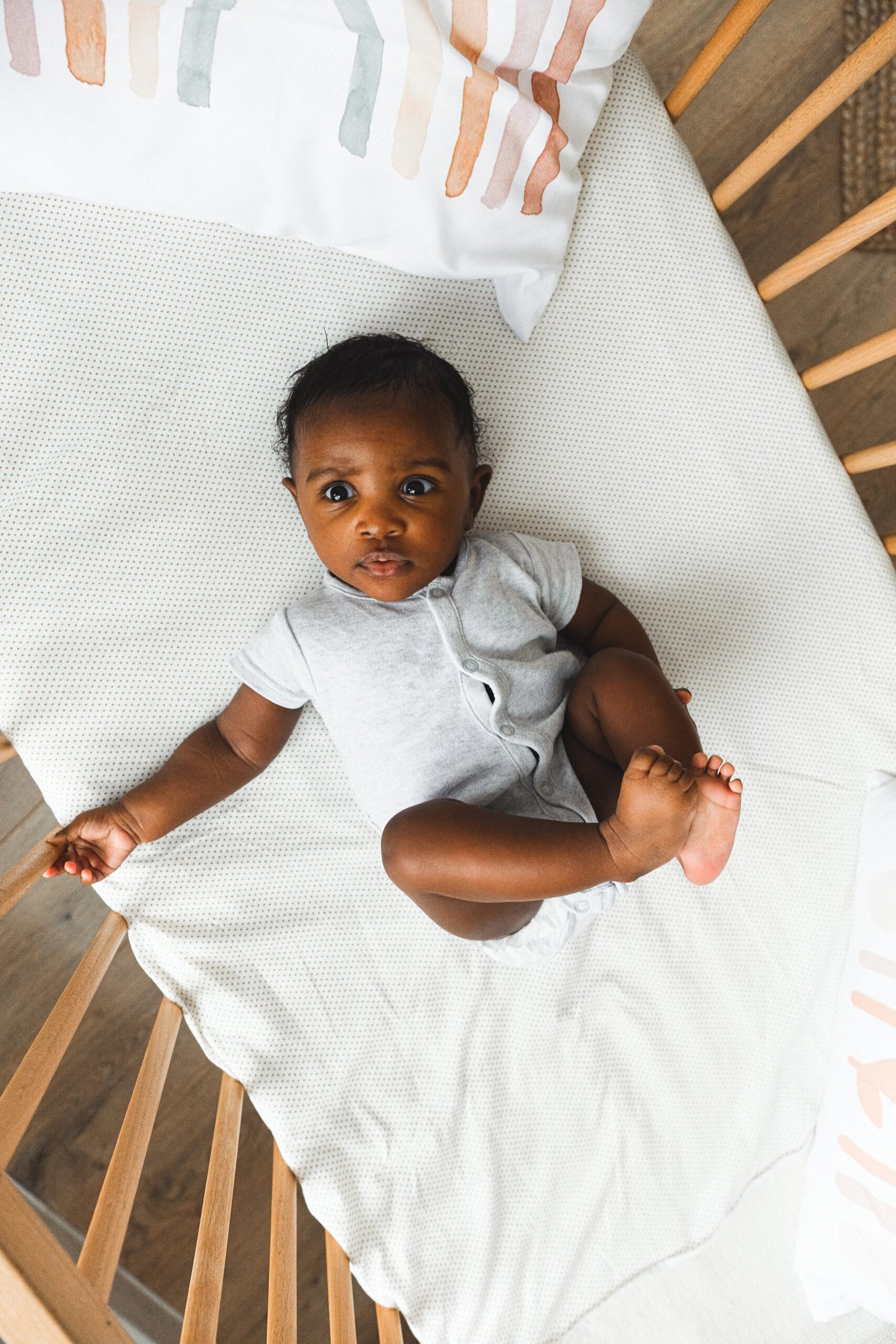I'm Rachael
Mom of 3 & Baby Sleep Expert with Big Sis Energy
& I’VE DONE ALL THE RESEARCH FOR YOU ALREADY.
Better sleep for the entire family
BROWSE COURSES
hey!
Montessori Toddler: My Hybrid Views
A personal and professional review of The Montessori Toddler.
This book is stunning. Visually, emotionally and mentally it is a soul warming read. It gave me goosebumps thinking about the type of experiences toddlers could have. I felt calm and serene – HOWEVER – I then remembered I have a whirlwind of a toddler and when I factored her into the ideas, things didn’t seem quite so calm and the ideas explored in the book of toddlers calmly selecting baskets and completing activities and putting them back on the shelves – no matter how much practice she had – didn’t seem quite so picturesque or real anymore.
So lets take a journey through the book and I will give you my personal and professional thoughts.
In the first chapter Davies reframes how we see toddlers. It’s written in a very accessible way and mirrors everything I believe as an Early Years Consultant and on a personal level as a gentle parent. Toddlers are brilliant, unique and should be championed and not demonized which is how we tend to refer to them in the west even if it is done in jest. Toddlers need freedom, they need movement and they need creative opportunities alongside calm and loving guidance. The layout of the chapter is beautiful to look at and makes you feel instantly calm with its neutral tones, subtle illustrations and small segments with pauses and breaks. This chapter is a wonderful frame for the ideas incorporated in the rest of the book – those of calm, child centered, slow, creative parenting.
With Montessori being such a buzz word at the moment this book is very on trend. If you follow many parenting accounts on Instagram you will have come across the beautiful, neutral coloured playrooms and toy shelves. However, this is only a tiny segment of the philosophies of Montessori and the rest of the ideas and research are often overlooked. Davies addresses this as she guides the reader through a succinct history of Montessori Education and its Philosophy of Child Development. It is an interesting read and having this foundational knowledge of who Dr Maria Montesorri was and an understanding of her deep love and respect for children and their development connects the reader in a more emotionally attuned way to the principles that Montessori Education proposes. Often these parts of books can become slow and drawn out resulting in the reader to put the book down or skip ahead. However, Davies explores the main principles with just enough information that you feel motivated and informed but not overwhelmed. What is currently depicted as ‘Montessori at Home’ or ‘Montessori Nurseries’ is often diluted. The summary provided by Davies allows you as a reader to ground and immerse yourself in the Montessori ideology before she takes you further into the rhythms and routines of a Montessori household. As a professional, I think it is so helpful for parents to have an understanding of early childhood education and how our thoughts and views in the West have been shaped over the last centuries.
With a foundational knowledge under your belt Davies guides the reader in Chapters 3 and 4 through activities and the initial set up of a Montessori home in order to empower and nurture your toddler’s uniqueness. As a parent I found these chapters inspiring but also challenging. Even with all the background education I have and my years as an Early Childhood Practitioner I still find it so hard to slow myself down. It somehow felt easier in the classroom at school to just watch, observe and listen. I had help and support and breaks. At home with my toddler there is just me. I’m exhausted from having no village, the washing needs doing, the dinner needs cooking and the house needs cleaning and I find it hard to tune that out to listen to the needs of my toddler and even harder to just observe. I forget to not question, not interject and find myself ‘just’ needing to do this and that. I’m restless and anxious as a person and find it difficult to slow down within my own daily life. So although these chapters encouraged and inspired me to try harder to take life at a slower pace, they also left me feeling inadequate as a parent. Yet as I delved into this I realised that what Davies explores in the book is the ultimate level. It’s mastery. I, like a Montessori toddler, am still learning the skills of slowing down and observing in this environment and I have tried to be kinder towards myself as I develop these skills. Modern life is so rushed, many of us don’t have support and although we may really wish to live the life depicted in the book it is incredibly hard to do this well. Some acknowledgement of it being a process would have perhaps allowed the reader to see themselves in the life being portrayed.
Davies’ teachings around Montessori activities and how to set them up and demonstrate them to your toddler are really useful and there are many wonderful and practical tips. I found the activities slightly infuriating. However, I again think that was down to my expectation of how my toddler would interact with the activity rather than the activity itself. For example the water colour tablet paint. I know as a parent if I set up a glass of water, a water colour tablet and a brush my toddler would not calmly experiment with this. Her creative process is larger than that. My toddler’s uniqueness would be demonstrated through her liberal approach to the application of this paint on different surfaces. The carpet, the chairs, the wall. Now I have a very relaxed approach in my house, we have many interior design projects that were the work of my toddler, but the idea that she would sit and experiment with this seemed a far fetched romantic notion. Davies does briefly touch on this as she emphasises observing your toddler and noting what they are showing sensitivities towards but my daughter has such an innate affinity to climbing and movement that the baskets on shelves never seem to capture her attention. Moreover, Davies does say to meet your toddler where they are at but I didn’t find many activities suggested for this type of sensitivity. Although I love the idea of for example a music box and toddlers carefully working out what sounds can be made and how these sounds are made I do think that this is not a reality for most toddlers! I found the shelf activity chapter the hardest to get on board with. Moving on from specific activities Davies delves into activities around the house. These are brilliant and the explanations, tips and information alongside these empowers and inspires you as a reader to set up your home so your child is able to help as much as possible. I love this philosophy and it ties in so well with the last review I did of Hunt Gather Parent and the idea of ‘acomodido’ (children being involved around the house and with daily life right from birth). My toddler thrives with this set up at home and I found the suggestions of chores to involve her in and ways of setting things up really useful.
Chapters 5 through to 7 explored the personality and uniqueness of toddlers in greater depth. As both a professional and a parent I love reading different ways of celebrating toddler hood. It makes me feel much more positive that the tides are turning and a new wave of respectful, positive, gentle parenting is going to come into mainstream society. She begins with a brief summary of the five ingredients for curiosity, trust in the child, a rich learning environment, time, a safe and secure base and fostering a sense of wonder. The explanations are succinct and empowering – something Davies does well throughout the book. She links them together well in a way that empowers you to be child led across all areas and offers practical explanations of how households could adopt them. However, the chapter then moves onto the seven principles for curious humans. Again, these are explained well and do inspire you as a reader however I do think that these are much more achievable with a stay-at-home caregiver. Parents already feel under a lot of pressure and the break down of community and village support means that a huge increase in load has been placed on parents. We all know it is much easier to parent together with friends than in isolation. As a result, the do lists seem never ending, the chores feel relentless and the feeling of inadequacy build. Unfortunately, the consequence of this is that unstructured relaxed family time for toddler to just be has been impacted.
Daily life is rushed, and parents are stressed. Therefore, reading about how toddlers thrive with the opposite of this with no recognition of how the state of society ensure this is at times impossible leaves parents feeling guilty. So, whilst as a professional this is a succinct and accurate portrayal given by Davies of how best to foster independence, curiosity and creativity in order for toddlers to thrive, as a parent it is overwhelming.
My favourite chapter from the whole book is ‘Accepting Our Child For Who They Are’. This is a lesson we will learn and relearn and relearn in our parenting journey. We have a huge tendency in the west to compare and analyse and judge and tick off milestones for our toddlers and as a result our view of their uniqueness can be squashed. This is particularly true for new parents who are indoctrinated by societies expectations and inundated with questions about what their baby can do that it is hard to not compare your child. When your friends child is walking by 11 months and at 18 months your child is not you could focus all your attention on this and miss all of the rich learning experiences and development your child will have undergone. I cannot sing the praises of this chapter enough as a parent and as a professional. Davies emphasises really well the need for great depths of empathy for our toddlers and their behaviour and actions. She reframes common gripes of parents such as sharing and explains them from a toddler perspective. They simply want to play with that toy right now because it looks so exciting, and they have little impulse control. They aren’t being destructive they are exploring. They aren’t winding us up they are exploring cause and effect and our reactions. Toddlers learn by repetition however exhausting this maybe as a parent. Even though as a professional I understand this, reading it the way Davies wrote about it made me feel much closer to my daughter and helped to refill my patience well. Moreover, Davies’s advice around helping toddlers to communicate was very grounding and I found myself screenshotting parts and sending them to my friends. We need to be our toddler’s translator and foster respectful communication skills early. Just because toddlers don’t yet have the language to explain entirely independently doesn’t mean we can’t scaffold as parents.


‘Are you trying to tell me’ is a brilliant phrase offered by Davies to help with this. As is the takeaway to ‘allow all feelings but not all behaviou’r and the breakdown of phrases Davies uses to achieve this is really brilliant practical advice that any household could adopt. As a parent I find key phrases help me to stay calm in the moment and the consistency helps my toddler to respond. Davies ends this chapter with a discussion about praise. The advice offered is brilliant and insightful but hard to implement. ‘Good job’ just rolls out before you can stop it! However, it is useful to have reminders and alternative phrases. The same types of strategies are echoed in Davies stance on discipline. She offers a clear, concise exploration of gentle and positive discipline and encourages us as parents to think about how we phrase things and to be kind, calm and deeply empathetic in our tone. Davies offers useful phrases to adopt ‘I cant let you draw on that chair but I could find you some paper to draw on’. Out of context that sounds great but in context as a parent when you have an internal voice telling you’ now I’m going to have to clean that chair’ it can be hard to stay calm and regulated. This is touched on in Davies chapter of preparation of the adult. Knowing how to process your own frustrations and emotions is a key component in this type of parenting. Davies acknowledges that speaking from a place of response and not reaction is hard and therefore it is of the upmost importance that you look after yourself and fill up your emotional cups.
One of the most contentious parts of the book for me was the views around infant sleep. Perhaps indicative of the time that Doctor Maria Montessori was alive and researching her pioneering work but as a professional I believe that our understanding of responsiveness and infant sleep has progressed and that the Montessori outlook on sleep seems to be somewhat stagnant. For example – there is an explanation given of the chair method of helping your toddler to sleep independently. Moving the chair further and further away each night and not making much eye contact in order to let them know they need to fall asleep. If we are to continue along the lines of ‘every toddler is unique’ then every toddlers sleep needs are unique and I think the same Montessori principles we apply in the day should be applied at night. To observe, respond, respect and gently parent your toddler in the way in which they need.
The book ends with advice surrounding working together with your extended family and caregivers of your toddler to embrace the philosophies and ideas outlined. These are quite simplistic and left me with quite a few questions. I’m sure Davies has more information and experience regarding these areas and maybe this needs a separate book!
Overall this book is a brilliant read. I think as a reader it immerses you in a world of child-led respectful parenting and when you surface from the visually beautiful aesthetics of the book you do so as a calmer gentler parent with a deep desire to renovate your home to empower your toddler!

Was This Helpful? Save It For Later!
binge reads
We think you'll love these
You deserve to the
baby stage, not just "survive it."
And you DON'T have to sacrifice your values, ignore your instincts, or force yourself to follow a method you don't align with just to get your baby back to sleep.
I’m here to help you create a restful, sustainable sleep environment that honors both your baby’s needs AND your own (without the stress OR the guilt!) because, no, you don’t have to choose between the two.
enjoy!
BABY SLEEP COURSES →
BABY SLEEP CONSULTS →
Wish you could help your baby sleep better without resorting to sleep training? Download my FREE guide to a good night’s sleep and learn 8 simple, science-backed tips for supporting your child’s needs.
Traditional sleep training methods don’t have to be your solution to better sleep.
SLEEP TRAINING ISN’T THE ONLY WAY TO GET GOOD SLEEP
Hey, I'm Rachael and Hey, Sleepy Baby is for parents who want to get their nights back, without sleep training their babies.
NO ONE TOLD US POD
explorING the untold truths of parenting










